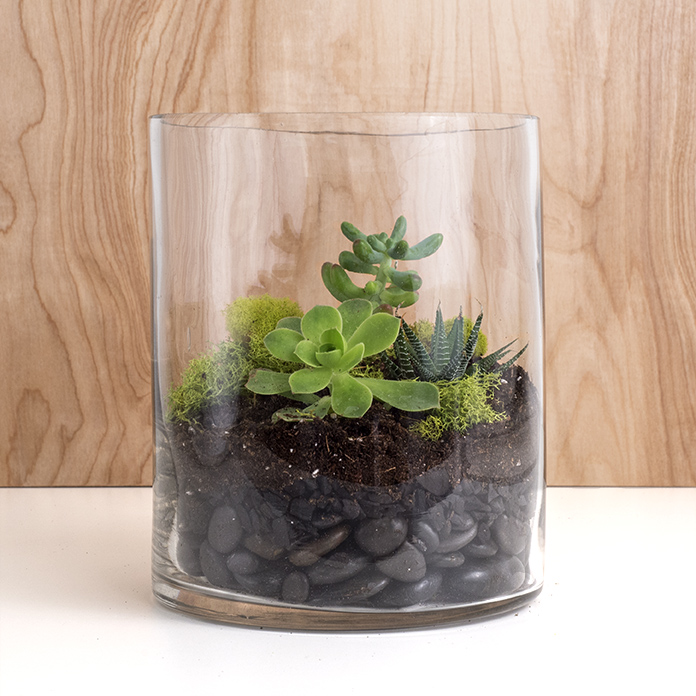Add greenery to your home or office space with a Terrarium. Not only are they tranquil and exquisite, but they’re also easy to build and maintain. Terrariums allow you to grow plants that require a high degree of humidity, which would probably perish in the dry atmosphere of a heated home. The plants transpire moisture through their leaves, which then condenses on the glass or plastic, and flows back to the soil. This moisture cycle then allows the terrarium to go for long periods of time without watering. Here is a step-by-step tutorial on how to set up and build your own terrarium:
Set up is the most important part of building your own terrarium. As with any landscaping project, selecting appropriate plants or succulents is important. A closed terrarium retains more moisture, while an open terrarium requires more frequent watering, but is less prone to disease and easier to manage. Choosing your container is all a matter of preference.
1. Gravel: The bottom layer is for drainage and consists of river stones of your choice. Proper drainage is essential to ensure that the soil doesn’t become over-saturated. We suggest spreading at least a half inch of drainage stones across the entire bottom of your terrarium.
2. Charcoal: On top of your drainage layer, spread evenly a layer of activated charcoal or carbon. This layer will help clean the air and absorb any unpleasant odors.
3. Soil: The final layer should fill a few inches of your container. To make it more realistic, add contour to the landscape with different levels of soil.
4. Plant: Whatever you choose, they should be compact and slow growing and should all be able to survive in the same conditions as their companion plants. Choose a variety of heights, textures, shapes, and colors.
5. Accessorize: Use stones, moss, or pieces of wood as landscape accents to give personality to your new terrarium. Remember to keep additions to the miniaturized.
scale of the surrounding terrarium.
After planting and accessorizing, the soil should be slightly moistened. Never allow the soil to be soggy. Check the terrarium frequently as it may become necessary to prune or replace dead plants.
Excessive watering is the number one terrarium-maintenance problem. Terrariums should only be watered when the soil is dry to the touch. When in doubt, always water less, but watch careful to ensure your plants don’t dry and wilt. Have fun and be creative.
Happy Earth Day!








